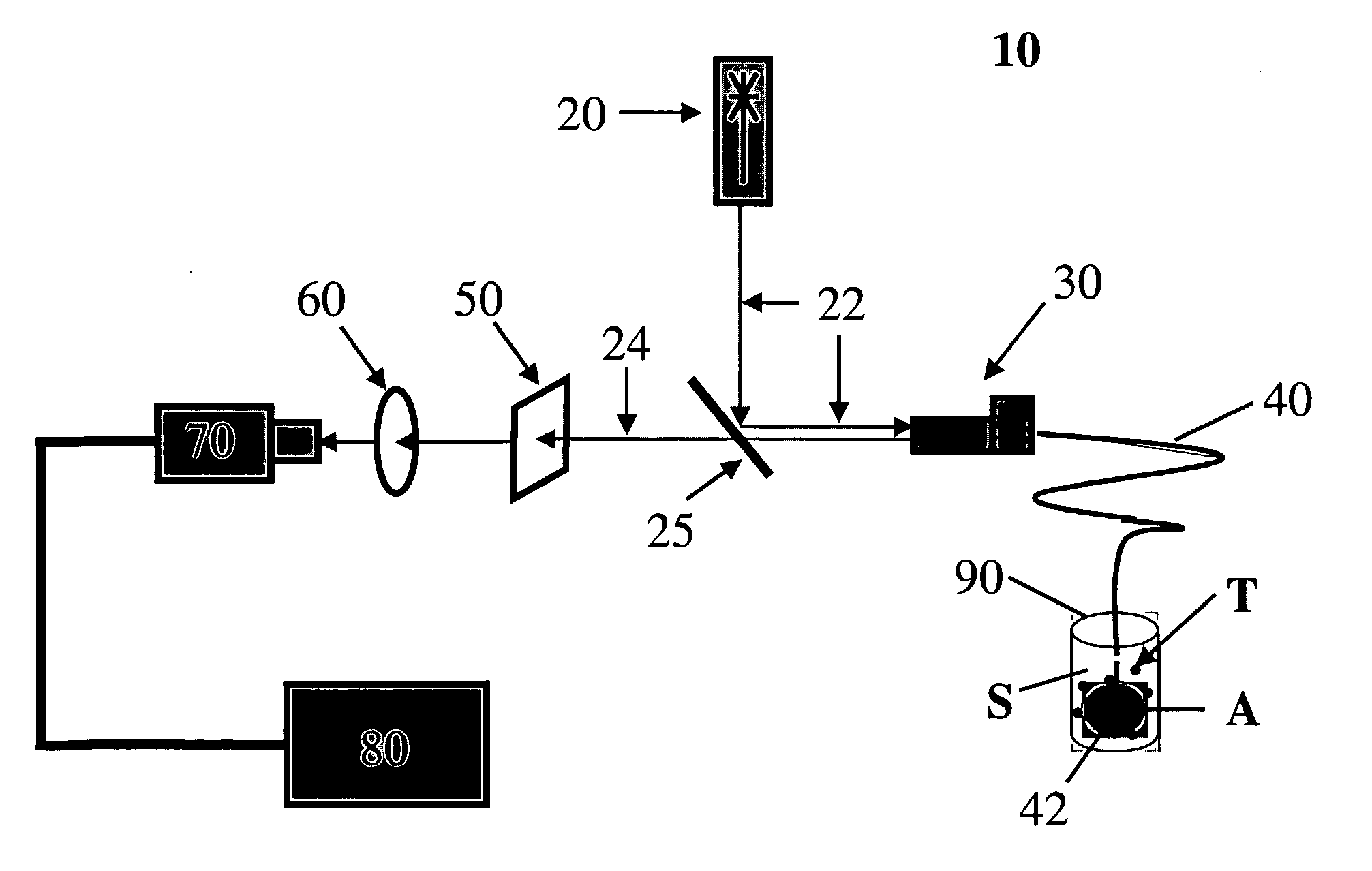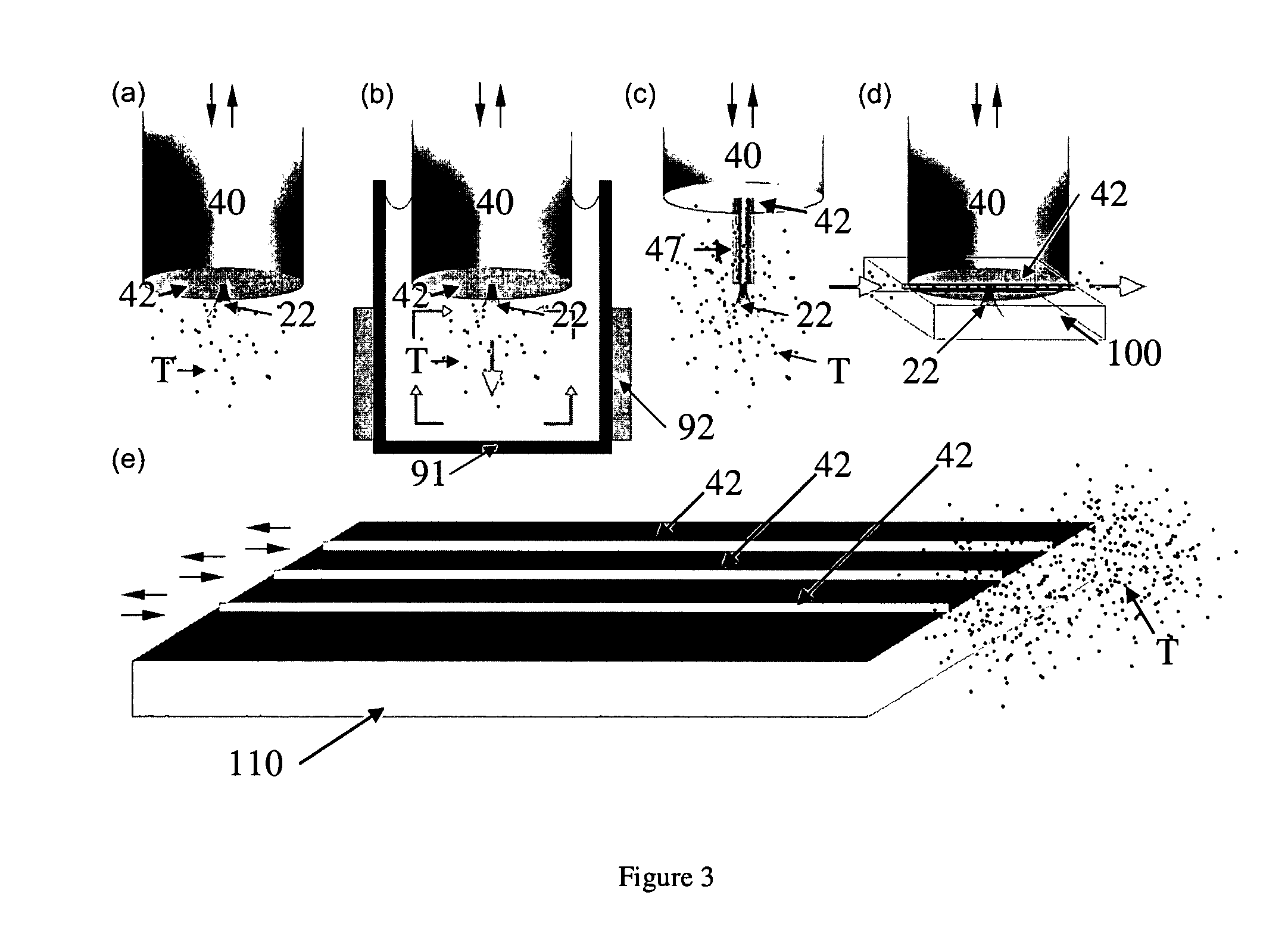Single Analyte Molecule Detection by Fibre Fluorescemce Probe
a single analyte molecule and fluorescemce probe technology, applied in scanning probe microscopy, photometry, nanotechnology, etc., can solve the problems of generating erroneous readings, limited use of fluorescent probes, and time-consuming and expensive techniques relying on amplification technologies
- Summary
- Abstract
- Description
- Claims
- Application Information
AI Technical Summary
Benefits of technology
Problems solved by technology
Method used
Image
Examples
Embodiment Construction
[0028]The present invention includes both a method and apparatus for the detection of single analyte molecules in solution. In order to facilitate an easy understanding of the present invention, the apparatus embodiment will be described first.
[0029]The apparatus of the present invention is an optical system 10, as shown in FIG. 2, for the remote detection of single analyte target molecules in a solution. This optical system 10 operates on the principle that excitation light 22 delivered by a waveguide 40, made in whole or in part by a dielectric material of higher index than the test solution S, can excite target molecules T of interest thereby causing the target molecules T to emit radiation. In addition, the optical system 10 uses the waveguide 40 to transmit excitation radiation emitted mainly by target molecules that are sufficiently close to the surface of the waveguide (i.e., distance between excited target molecules and the surface of the dielectric waveguide must be less th...
PUM
| Property | Measurement | Unit |
|---|---|---|
| excitation wavelengths | aaaaa | aaaaa |
| dielectric index | aaaaa | aaaaa |
| first wavelength | aaaaa | aaaaa |
Abstract
Description
Claims
Application Information
 Login to View More
Login to View More - R&D
- Intellectual Property
- Life Sciences
- Materials
- Tech Scout
- Unparalleled Data Quality
- Higher Quality Content
- 60% Fewer Hallucinations
Browse by: Latest US Patents, China's latest patents, Technical Efficacy Thesaurus, Application Domain, Technology Topic, Popular Technical Reports.
© 2025 PatSnap. All rights reserved.Legal|Privacy policy|Modern Slavery Act Transparency Statement|Sitemap|About US| Contact US: help@patsnap.com



